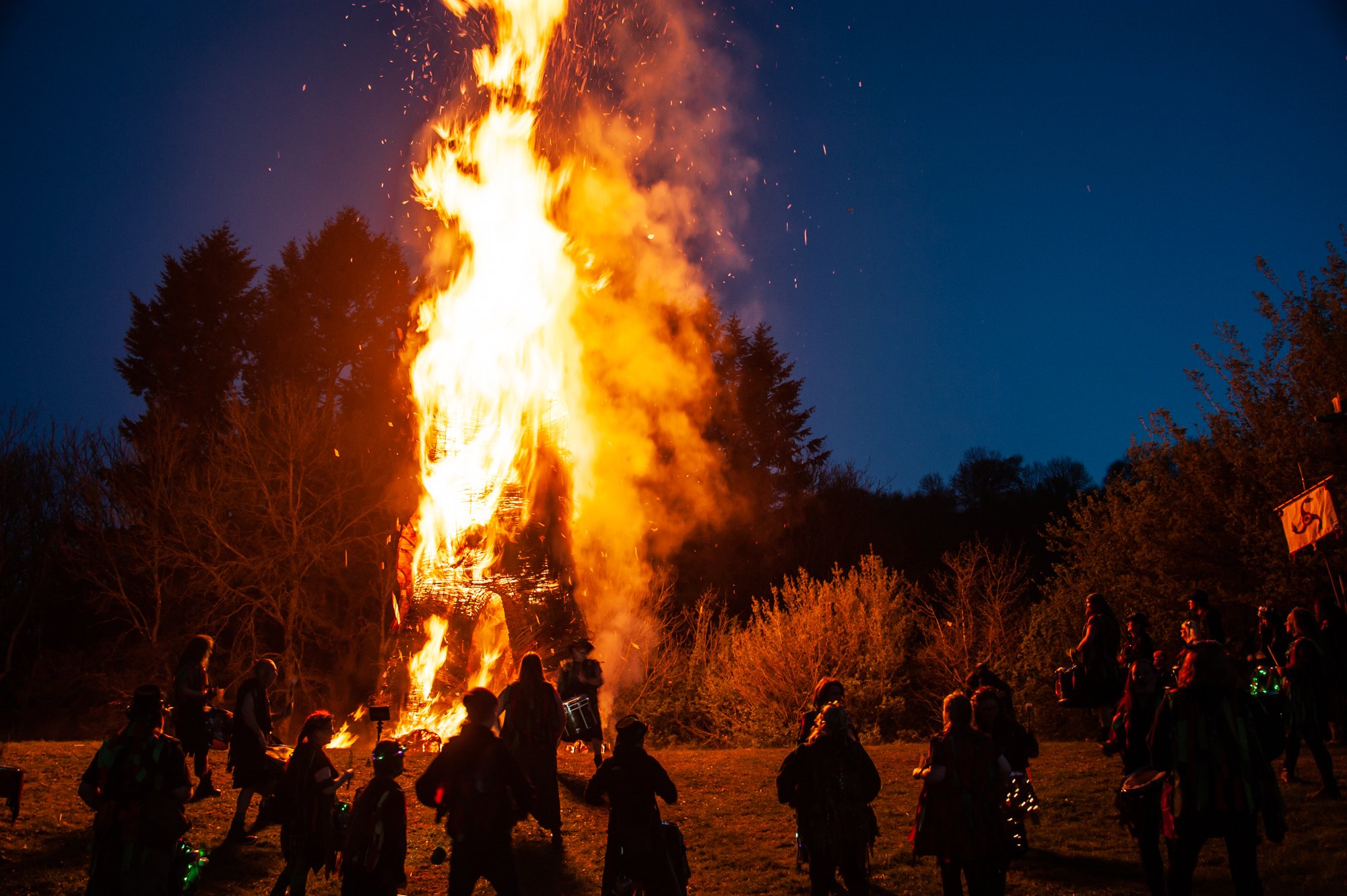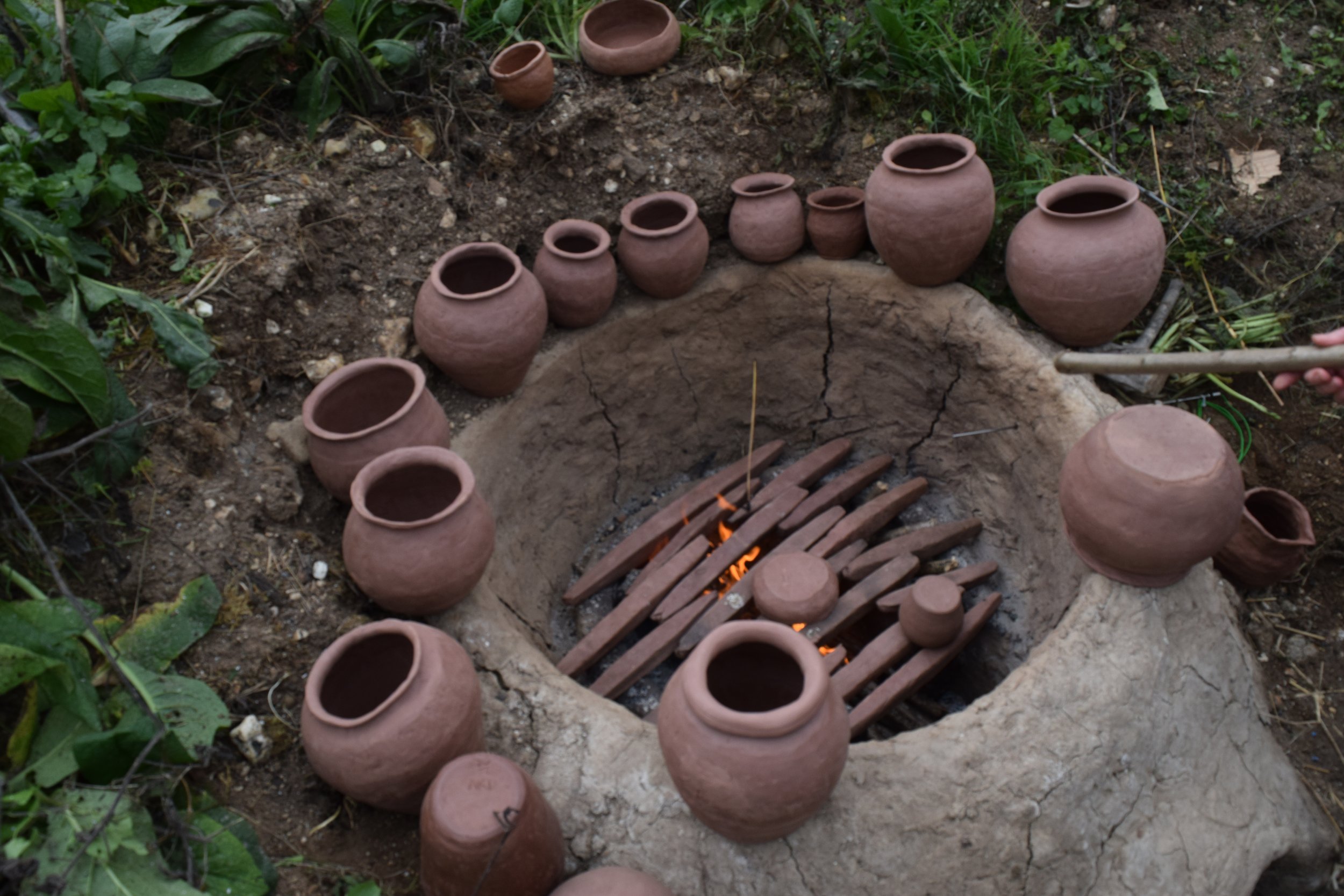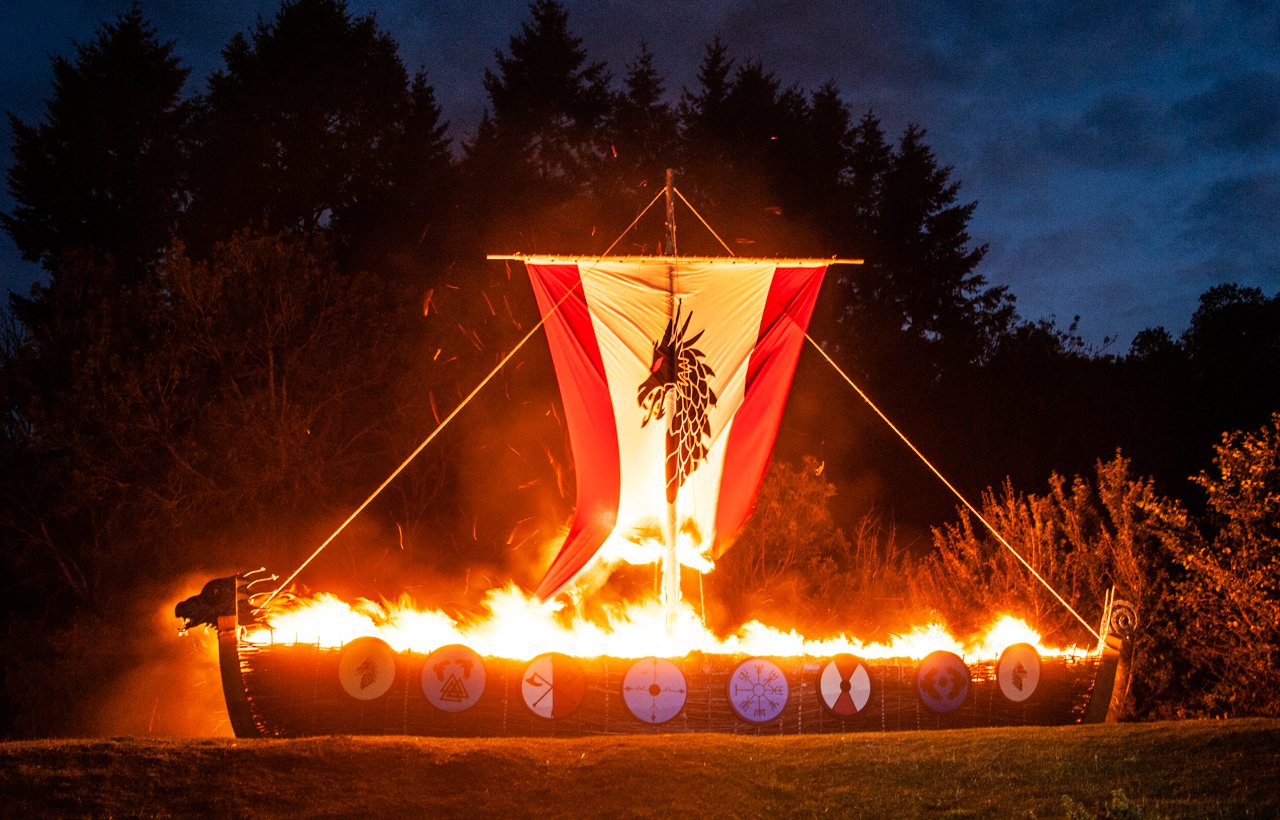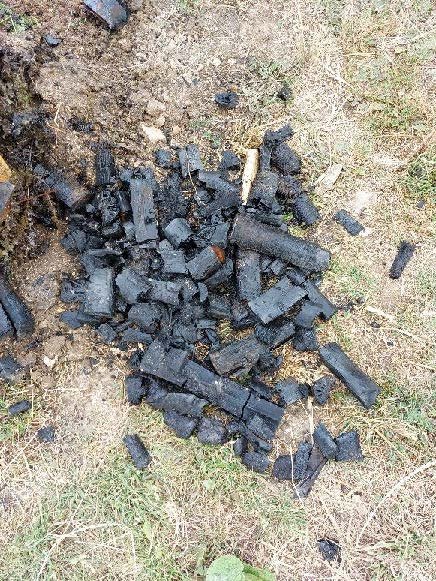We celebrated Beltain Celtic Fire Festival with an afternoon and evening of music, mead, merriment, and of course, the burning of our 30ft wickerman. Here’s to good company and sunny days!
Four of the Most Incredible Ancient Female Burials in Archaeology
We’re celebrating International Women’s Day! Let’s explore four of the most incredible ancient female burials in archaeology: from a tattooed princess to a Viking shieldmaiden, these women lived outstanding lives, and their graves can help us understand the world they came from.
Whenever we talk about ancient people and burials, it's really important that we remember there's much more to a person than the shape of their bones or a DNA readout — how they fit into society, what name they used, or how they thought of themselves are all still mysteries to us. We can’t even know for sure if the things they’re buried with belonged to or were important to them: that’s often how they make most sense to us, but the dead don’t bury themselves after all. And, as we'll see with some of these burials, mapping modern ideas about gender and society onto people from the ancient past is never a good idea.
This is a bit of a morbid topic, but this article contains no pictures of human remains, so you’re safe while you’re here.
With all that said, let's get right into exploring these four exceptional graves, and the lives of the people in them!
Selection of flint tools on display at Beltain 2022 // Image: William Mulryne
4. The Huntress of Wilamaya Patjxa
In 2018, archaeological excavations high in the Peruvian mountains uncovered a 9,000-year-old grave filled with so many hunting tools that archaeologists assumed they’d found a revered chieftain and master hunter. But as DNA testing soon showed, the grave belonged to a teenage girl.
In the end, there were six burials found at Wilamaya Patjxa, but this girl was the only one buried with hunting tools. And more than that — she was buried with so many tools, a whole Stone Age inventory of everything she would have needed to bring down big game and prepare its various parts. She had flint projectile points for arrows or a spear, knives and axes for butchery, scrapers and ocher for processing hide, and more. All in all, over 24 tools were found in her grave, grouped in such a way to suggest she might have had them in some kind of bag or container — a literal toolkit she could carry around with her.
This incredible find prompted researcher Randall Haas and his team to go back and look at other hunter graves in North and South America from this period. Women had been found with hunting tools before, which had often been explained in other ways — a flint projectile point can be useful for other things than just hunting. And it’s not unreasonable for researchers to assume that, in ancient hunter-gather societies, the division of labour would have been down gender lines: man the hunter, woman the gatherer. That’s how many modern hunter-gatherer societies work, after all.
But this find throws a wrench in that idea, and so do Haas’ findings: his team identified 27 graves from this period that include hunting tools for big game like ancient alpacas and deer. 11 of those belonged to women. Far from hunting being exclusively for men, Haas now believes as many as 30-50% of big game hunters could have been women, meaning the division of labour for hunter-gatherers may have been much more gender neutral than people assumed.
Recreation of the Bad Dürrenberg Shaman headdress at Beltain 2022 // Image: Harvey Mills
3. the shaman of Bad Dürrenberg
Discovered by archaeologists in Germany in 1934, this grave was immediately clear to be something really special. The 8,500-year-old body was surrounded by more than 150 bones and artefacts, and the Nazis, in power by that time, fell about themselves trying to claim the grave belonged to an ancient Aryan man. They couldn’t have been more wrong.
The body belonged to the woman we now call the Shaman of Bad Dürrenberg, and she wasn’t alone — she was also buried with a baby boy, assumed to be her own child, although recent research throws that into doubt. The two people were buried in a red clay reserved for important and respected individuals, and the woman was quickly identified as a likely spiritual leader. It seemed she had some kind of headdress made of deer antlers and pierced boar teeth pendants, and the items around her were made from many other bones, even from cranes and tortoises.
Study into the Shaman’s own bones has revealed she had scoliosis, and may have suffered from various neurological conditions as a result of her bone structure — involuntary eye or limb movement, head and neck pain, sensations of crawling skin, and even hallucinations. In a culture that may have practiced shamanism, these could have been interpreted by her or her people as spiritual trances or visions. It’s even possible she may have learnt to control some of her symptoms and induce an altered state at will.
In their 2022 book, archaeologists Harald Meller and Kai Michel revealed that the Nazis were even more wrong in their assumptions. Not only was the Shaman a woman, and a woman whose experiences with disability may have elevated her as a spiritual leader, but like many early humans the Shaman of Bad Dürrenberg was also dark-skinned.
Butser roundhouses enveloped in winter fog // Image: Butser Ancient Farm
2. The Siberian Ice Maiden
In 1993, a team of archaeologists under Natalia Polosmak made an incredible discovery in the Eurasian Steppes of Siberia. Deep in a burial mound, suspended by thousands of years of ice and permafrost, was a 2,500-year-old mummy.
The Siberian Ice Maiden, as she’s come to be known, was given a lavish burial. She was dressed in brightly-coloured silks and an incredible 3-foot tall headdress, with a polished mirror and makeup supplies near to hand. Leather deer were appliquéd onto her casket, and her headdress was decorated with golden cats. Around her was placed a feast — and, thanks to the ice, parts of the food were preserved even thousands of years later: deer meat, a drink for the afterlife, and something that might have been yoghurt.
The most incredible part of this archaeological discovery, though, is the woman herself. The ice kept her in such a good state that you can still see the tattoo on her shoulder — a leaping deer. The incredible state of her preservation also meant that, in 2014, researchers Andrey Letyagin and Andrey Savelov could conduct an MRI scan on the mummy. And their findings are really significant: she had chronic pain.
The woman was dying of breast cancer, and had suffered a recent fall (from her horse, perhaps) that fractured her skull. Together, this knowledge sheds new light on another item she was buried with: a little container of cannabis, possibly taken for pain relief.
Thanks to the way she was preserved, we know so much about the Siberian Ice Maiden. It’s not hard to imagine this young woman, in her 20s when she died. She wore eyeliner, rode horses, got tattoos, fought cancer, took painkillers, and commanded intense respect from her people.
Saxon reenactor with Herigeas Hundas at the Equinox Viking Boat Burn 2022 // Image: Alan Ridgley
1. the birka viking warrior
In 1878, archaeologist Hjalmar Stolpe uncovered in Sweden one of the most remarkable graves of a Viking warrior ever found. It was a 10th Century grave of the ultimate Viking warrior, and, as was proved in 2017, it was the grave of a woman.
The Birka Viking Warrior was a trained fighter. Rather than the two or three weapons most warriors were buried with, she had a full set of battle equipment covering a variety of fighting styles — sword and shield, bow and armour-piercing arrows, horses for mounted combat, axes for hand-to-hand fighting, a spear for range… More than that, her weapons were battle-scarred. These weren’t ceremonial or symbolic, they were real equipment for a professional fighter.
She wasn’t just buried with weapons, either — her clothing and other grave goods, including a tactical board game hnefltafl, suggest she was affluent and respected, and may even have been a commander with her own warband. Textiles experts analysing her clothing have argued that she was of such a high status that she may have answered directly to a royal military leader.
In the 10th Century, Birka was a major Viking trading post and the first real city in Sweden, and it had a hillfort with a military garrison for defense. When she died, the Viking warrior was buried outside the gate of the hillfort, beside two other graves containing a lot of weaponry, so it seems likely she was a professional warrior tasked with the defense of one of the Viking world’s greatest trade centres. If she could do it, how many more Viking women warriors could we be missing?
Archaeology is always an exercise in interpretation — we don’t know for sure how these people lived, or if our understanding of their graves is right. But burials give us some of the best snapshots into the past, and help us understand what was important to a people and their culture.
These four burials give us a glimpse into ancient worlds where women were hunters, fighters, and spiritual leaders, and remind us that you can’t make assumptions when you look at the ancient past!
First Time Thatching
Firing a Roman Kiln
Previously in our blog we heard from Professor Bill Sillar - Professor of Archaeology and Technology in Society at UCL Institute of Archaeology about the Roman Kiln UCL built at the farm. Below Bill describes the process of firing the Kiln for the first time during UCL’s ‘Archaeotech’ experimental archaeology course.
Viking Boat Burn for the Autumn Equinox 2022
An Experimental Charcoal Burn
During the Festival of Archaeology, we were joined by woodsman Mark Allery to demonstrate the process of charcoal making. He was helped by Katie, a student from Bournemouth University on a work placement here at Butser. Here she is reflecting on the experience — just one of many things she’s been helping us with on site!
During the Festival of Archaeology, I spent a day working with Mark Allery learning the process of making charcoal. It was fascinating to learn, as we did two different methods: using an oil drum and a traditional earth burn. The oil drum was used to produce a larger amount of charcoal to be used for other experiments, such as metalworking, whereas the earth burn was more of an experiment.
Typically, an earth burn would use 4-foot logs, arranged upright in a circular pattern around a central pole, which is then covered in bracken and then an earth clamp. However, the earth burn that we did was on a much smaller scale, almost 1/8th the size of a traditional earth burn. Burns of this size aren’t typically done, but we wanted to see if there would still be a good yield of charcoal when using smaller logs.
Arrangement of logs before the earth clamp was constructed.
Thin sticks and offcuts were stacked around a central pole in a triangle shape, to create a base structure and provide fuel for the burn. The logs we were burning were around 8-9 inches and had been cut in half vertically. This allowed us to lay them upright around the ‘pyre,’ alternating the direction they were facing. The first layers edge was flat against the side of the structure, then the next layer faced outwards, which was repeated until it created a circular shape around the central log and pyre. Lastly, more logs were laid on top of the pile, creating a layer to help stop dirt from falling through the wood. Fresh bracken was placed on the top and around the sides to give another protective layer before dirt was packed around the entire structure.
The central pole was then removed, and the hole was filled with wood shavings, chips and a cloth wick soaked in oil. The wick was lit, and the hole was sealed using a flat piece of wood, bracken, and more dirt, completing the earth clamp.
Oxygen and temperature play a significant role in the process of making charcoal. We found that, due to the size, it was difficult to control these factors in the miniature earth burn. With the oil drum, it was easier as there were holes that could be covered and uncovered, depending on how fast or slow the burning needed to happen. On the miniature burn, the smoke was still only coming out of the top, which meant that the wood that was lower down wasn’t being cooked and wouldn’t end up as charcoal. We decided to poke holes along the bottom of the clamp, to try and ‘throttle’ the burn by bringing more oxygen into it. We hoped this would increase the temperature and help to speed up the process.
The earth burn.
Charcoal produced by the earth burn.
In total, we left it to burn for around 4.5 hours before we stopped the process by pouring water on it and starting to remove the earth and bracken. The results of the experiment showed that only the top 2 inches of the logs had been turned into charcoal, and that the outermost logs hadn’t been burned at all.
We decided that when building up the wood, we should have sloped the sides, rather than leave them straight, to allow for better airflow. We also should have left it to burn for longer, but we were working under the time constraints of the day. The earth burns done on a larger scale can burn for several days, so our mini experiment might have yielded more charcoal, had we left it longer.
The oil drum.
Charcoal produced by the oil drum burn.
Even though the mini earth burn didn’t yield much charcoal, the oil drum did, with most of the wood becoming charcoal. This burn process was fully completed, allowing the wood to have a good chance to fully cook. We knew this because the smoke from the drum turned blue and then almost stopped. At this point, we placed the lid on, sealed the edges with sand and the holes at the bottom with earth. This stops any airflow into the drum, and stops the cooking process, allowing the charcoal to cool down so it can be used. When we lifted the drum, we found a pile of charcoal was then taken to other areas of the farm for use.
Even though the experiment didn’t go entirely to plan, it was still exciting to find out what would happen. Using the results, and corrections, we could re-do the experiment to see if an earth burn of this size could produce a good amount of charcoal in relation to how much wood you choose to burn. Learning this process was incredible, and I’m thankful that I got to experience it, alongside all the other skills I’ve learnt on my placement!
Theory Vs Practice – experimental brass production
Building a Roman Kiln
Over the Easter holidays we welcomed staff and students from UCL and Archaeology South East to Butser for a mini ‘archaeotech’ - a chance for the students to get hands on with some experimental archaeology.
In the process they built a wonderful Roman kiln at the farm. Below Bill Sillar, Professor of Archaeology and Technology in Society at UCL Institute of Archaeology shares the process behind this latest construction.
